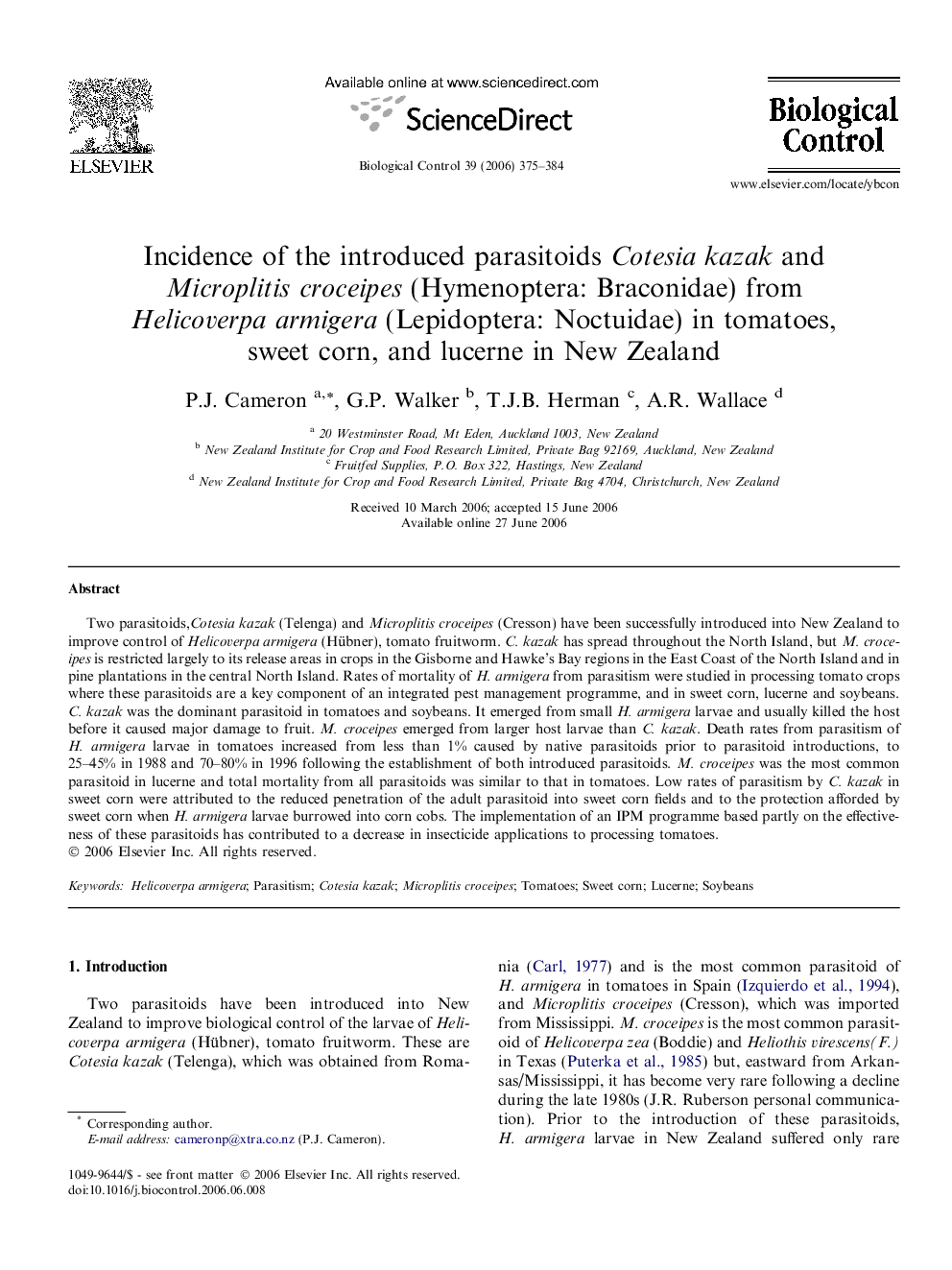| Article ID | Journal | Published Year | Pages | File Type |
|---|---|---|---|---|
| 4505385 | Biological Control | 2006 | 10 Pages |
Two parasitoids,Cotesia kazak (Telenga) and Microplitis croceipes (Cresson) have been successfully introduced into New Zealand to improve control of Helicoverpa armigera (Hübner), tomato fruitworm. C. kazak has spread throughout the North Island, but M. croceipes is restricted largely to its release areas in crops in the Gisborne and Hawke’s Bay regions in the East Coast of the North Island and in pine plantations in the central North Island. Rates of mortality of H. armigera from parasitism were studied in processing tomato crops where these parasitoids are a key component of an integrated pest management programme, and in sweet corn, lucerne and soybeans. C. kazak was the dominant parasitoid in tomatoes and soybeans. It emerged from small H. armigera larvae and usually killed the host before it caused major damage to fruit. M. croceipes emerged from larger host larvae than C. kazak. Death rates from parasitism of H. armigera larvae in tomatoes increased from less than 1% caused by native parasitoids prior to parasitoid introductions, to 25–45% in 1988 and 70–80% in 1996 following the establishment of both introduced parasitoids. M. croceipes was the most common parasitoid in lucerne and total mortality from all parasitoids was similar to that in tomatoes. Low rates of parasitism by C. kazak in sweet corn were attributed to the reduced penetration of the adult parasitoid into sweet corn fields and to the protection afforded by sweet corn when H. armigera larvae burrowed into corn cobs. The implementation of an IPM programme based partly on the effectiveness of these parasitoids has contributed to a decrease in insecticide applications to processing tomatoes.
